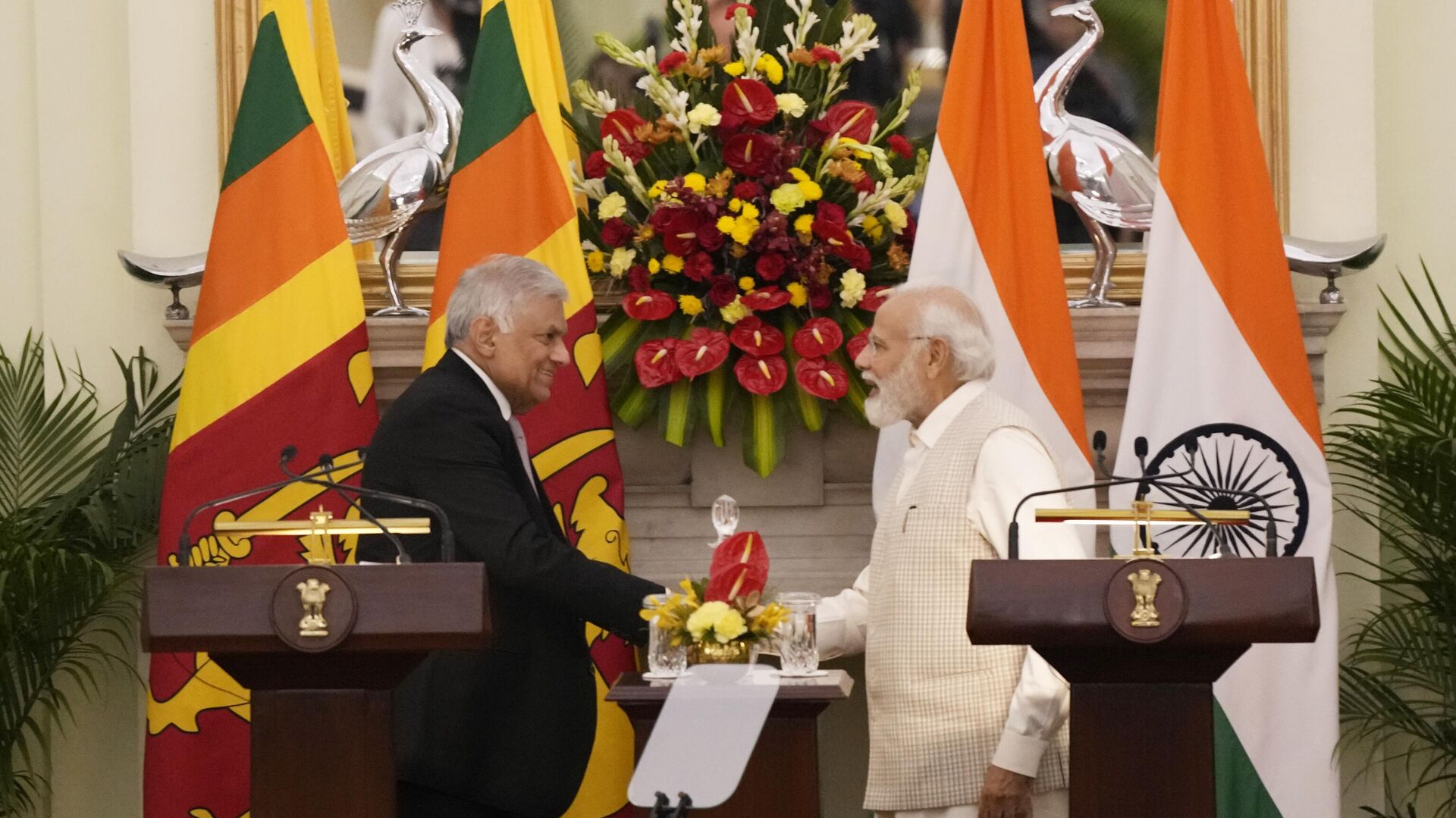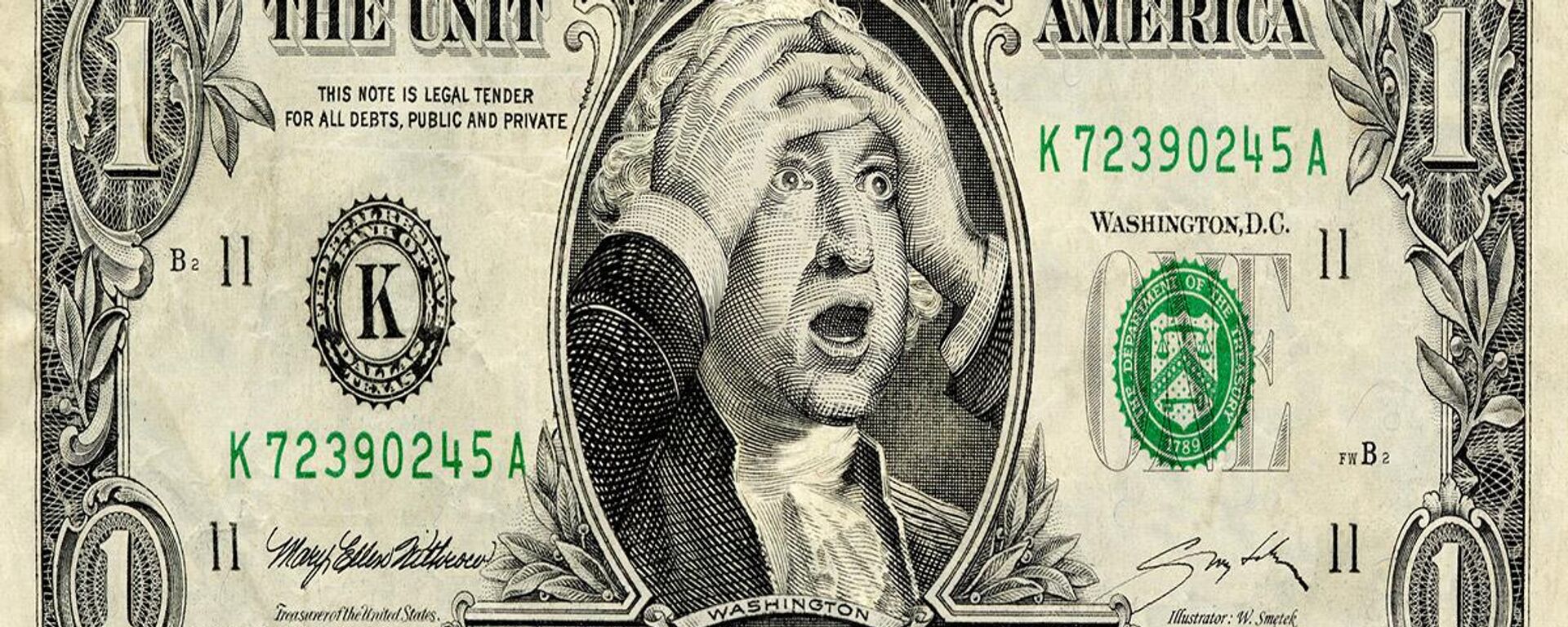https://sputniknews.in/20240528/indias-strategic-mineral-agreements-implications-for-sri-lankas-graphite-sector-7471124.html
India's Strategic Mineral Agreements: Implications for Sri Lanka's Graphite Sector
India's Strategic Mineral Agreements: Implications for Sri Lanka's Graphite Sector
Sputnik India
India is pushing back Western competitors in its approach to the Sri Lankan graphite industry. The country reinforces its status as a major participant in... 28.05.2024, Sputnik India
2024-05-28T22:06+0530
2024-05-28T22:06+0530
2024-05-28T22:17+0530
india
sri lanka
china
free trade agreement (fta)
rupee-rouble trade
trade in national currencies
sea trade
trade corridor
barter trade
westernization
https://cdn1.img.sputniknews.in/img/07e8/05/0d/7359216_0:161:3071:1888_1920x0_80_0_0_b119729f9ad6f6d90668ea38fdf83618.jpg
The strategic significance of Sri Lanka's graphite industry has revealed strong competition for investment among major global players, including India, China, the United States, France in addition to Canadian and Australian companies already involved in the industry, according to a report from the Daily Mirror.Sri Lanka is recognized for its substantial deposits of high-quality vein graphite, which plays a pivotal role in "India's battery manufacturing sector", Group Captain Ajey Lele (Retd.), Deputy Director General of Manohar Parrikar Institute for Defence Studies and Analyses, told Sputnik India. Meanwhile, Indian game plan on Sri Lanka mineral is significantly supported by the territorial advantage, Lele underscored.Highlighting India's strategic interests, Lele mentioned that the semiconductor industry emerges as a pivotal player, particularly in the realm of electric vehicles (EVs) and green technologies. He suggested that these industries heavily rely on various minerals, positioning India to contribute significantly, either directly or indirectly, to the global challenge of climate change."While India has secured agreements for cobalt and copper extraction from the Democratic Republic of the Congo, resources such as niobium and graphite from Tanzania, and graphite and titanium from South Africa, are indispensable across various industries. Yet, the security challenges inherent in these regions present notable hurdles," he suggested.India-Sri Lanka Rupee TradeHowever, Lele added that India is cautious about being "excessively reliant on any single source" to effectively mitigate such risks. Consequently, diversification, "exemplified by potential collaboration with Sri Lanka, is central to India's strategic approach," aligning with the dynamic requirements of supply chains and related considerations.The captain explained that pertinent of the nuances of Sri Lanka currency exchange denominations vis-à-vis Western countries hold significance in trade discussions.Furthermore, he recommended that exploring the potential for "bilateral trade between India and Sri Lanka in rupees opens up intriguing possibilities.""Such arrangements position India as a significant player in resource extraction compared to Western nations. This shift towards rupee-based trade suggests a promising avenue for fostering mutually beneficial trade relationships between the two countries," he concluded.Meantime, Director General of the Geological and Mines Survey Bureau, Prof. Ranjith Premasiri, confirmed the interest of Chinese and Indian companies in investing in the graphit sector, accroding to Indian media. He highlighted the importance of evaluating which businesses are maximizing the value of graphite for advanced industrial applications, especially considering the presence of over 3,000 abandoned pits across the country.
https://sputniknews.in/20240518/india-sri-lankan-de-dollarisation-drive-to-secure-11-billion-in-earnings-for-colombo-7398419.html
india
sri lanka
china
south africa
us
canada
australia
Sputnik India
feedback.hindi@sputniknews.com
+74956456601
MIA „Rossiya Segodnya“
2024
Swapna Nair
https://cdn1.img.sputniknews.in/img/07e7/09/12/4320104_0:0:681:681_100x100_80_0_0_ca8a7d4d582609272840ffdd1cde7278.jpg
Swapna Nair
https://cdn1.img.sputniknews.in/img/07e7/09/12/4320104_0:0:681:681_100x100_80_0_0_ca8a7d4d582609272840ffdd1cde7278.jpg
News
en_IN
Sputnik India
feedback.hindi@sputniknews.com
+74956456601
MIA „Rossiya Segodnya“
Sputnik India
feedback.hindi@sputniknews.com
+74956456601
MIA „Rossiya Segodnya“
Swapna Nair
https://cdn1.img.sputniknews.in/img/07e7/09/12/4320104_0:0:681:681_100x100_80_0_0_ca8a7d4d582609272840ffdd1cde7278.jpg
sri lanka's resources, global players, china, india, the united states, and france, graphite industry, canadian, australian companies, sri lanka, graphite, director general of the geological and mines survey bureau, prof. ranjith premasiri, chinese, indian companies, indian government, sri lanka's graphite industry, sri lanka-india proximity, bilateral relationships, geopolitical cooperation, western counterparts, crucial, supply chains, group captain (dr) ajey lele (retd.), deputy director general, mp-idsa, india's strategic interests, semiconductor industry, electric vehicles (evs) and green technologies, india, global challenge of climate change, graphite, india's battery manufacturing sector, democratic republic of the congo, niobium, graphite, tanzania, graphite, titanium, south africa, india, sri lanka, india's strategic approach, supply chains, sri lanka, the group captain, western nations, rupees, western nations, rupee-based trade, trade relationships
sri lanka's resources, global players, china, india, the united states, and france, graphite industry, canadian, australian companies, sri lanka, graphite, director general of the geological and mines survey bureau, prof. ranjith premasiri, chinese, indian companies, indian government, sri lanka's graphite industry, sri lanka-india proximity, bilateral relationships, geopolitical cooperation, western counterparts, crucial, supply chains, group captain (dr) ajey lele (retd.), deputy director general, mp-idsa, india's strategic interests, semiconductor industry, electric vehicles (evs) and green technologies, india, global challenge of climate change, graphite, india's battery manufacturing sector, democratic republic of the congo, niobium, graphite, tanzania, graphite, titanium, south africa, india, sri lanka, india's strategic approach, supply chains, sri lanka, the group captain, western nations, rupees, western nations, rupee-based trade, trade relationships
India's Strategic Mineral Agreements: Implications for Sri Lanka's Graphite Sector
22:06 28.05.2024 (Updated: 22:17 28.05.2024) India is pushing back Western competitors in its approach to the Sri Lankan graphite industry. The country reinforces its status as a major participant in resource extraction by capitalizing on the supply chain management expertise, which is bolstered by the states close proximity to Colombo and embracing rupee-based trade, according to experts.
The strategic significance of Sri Lanka's graphite industry has revealed strong competition for investment among major global players, including India, China, the United States, France in addition to Canadian and Australian companies already involved in the industry, according to a report from the Daily Mirror.
Sri Lanka is recognized for its substantial deposits of high-quality vein graphite, which plays a pivotal role in "India's battery manufacturing sector", Group Captain Ajey Lele (Retd.), Deputy Director General of Manohar Parrikar Institute for Defence Studies and Analyses, told Sputnik India.
Meanwhile, Indian game plan on Sri Lanka mineral is significantly supported by the territorial advantage, Lele underscored.
"Sri Lanka stands as India's immediate neighbour, fostering one of the strongest bilateral relationships. This proximity not only enhances geopolitical cooperation but also simplifies logistical operations due to the shorter physical distance between the two nations compared to Western counterparts. This geographical advantage proves crucial, especially concerning supply chains and related endeavours," he claimed.
Highlighting India's strategic interests, Lele mentioned that the semiconductor industry emerges as a pivotal player, particularly in the realm of electric vehicles (EVs) and green technologies. He suggested that these industries heavily rely on various minerals, positioning India to contribute significantly, either directly or indirectly, to the global challenge of climate change.
"While India has secured agreements for cobalt and copper extraction from the Democratic Republic of the Congo, resources such as niobium and graphite from Tanzania, and graphite and titanium from South Africa, are indispensable across various industries. Yet, the security challenges inherent in these regions present notable hurdles," he suggested.
India-Sri Lanka Rupee Trade
However, Lele added that India is cautious about being "excessively reliant on any single source" to effectively mitigate such risks. Consequently, diversification, "exemplified by potential collaboration with Sri Lanka, is central to
India's strategic approach," aligning with the dynamic requirements of supply chains and related considerations.
The captain explained that pertinent of the nuances of Sri Lanka currency exchange denominations vis-à-vis Western countries hold significance in trade discussions.
Furthermore, he recommended that exploring the potential for "bilateral trade between
India and Sri Lanka in rupees opens up intriguing possibilities."
"Such arrangements position India as a significant player in resource extraction compared to Western nations. This shift towards
rupee-based trade suggests a promising avenue for fostering mutually beneficial trade relationships between the two countries," he concluded.
Meantime, Director General of the Geological and Mines Survey Bureau, Prof. Ranjith Premasiri, confirmed the interest of Chinese and Indian companies in investing in the graphit sector, accroding to Indian media. He highlighted the importance of evaluating which businesses are maximizing the value of graphite for advanced industrial applications, especially considering the presence of over 3,000 abandoned pits across the country.



